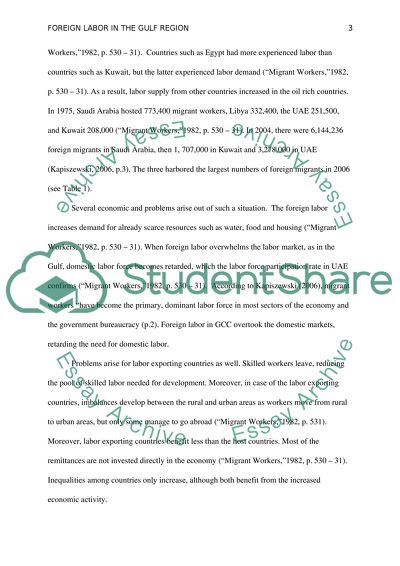Foreign Labor in the Arab Gulf Essay Example | Topics and Well Written Essays - 500 words. Retrieved from https://studentshare.org/miscellaneous/1597308-foreign-labor-in-the-arab-gulf
Foreign Labor in the Arab Gulf Essay Example | Topics and Well Written Essays - 500 Words. https://studentshare.org/miscellaneous/1597308-foreign-labor-in-the-arab-gulf.


